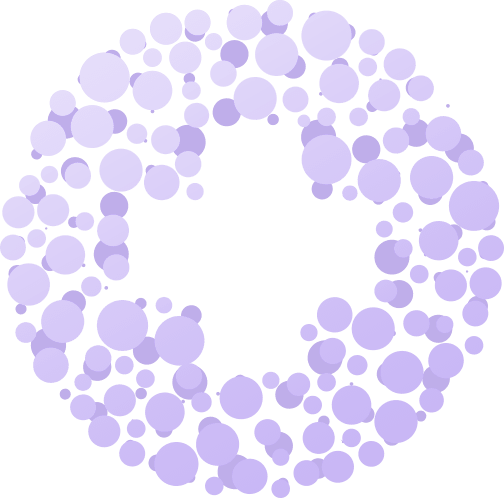The residents of long-term care facilities too often end up transferred back to the hospital. These rehospitalizations are expensive, disruptive and disorienting. Yet, installing artificial intelligence in long-term and post-acute care settings helps optimize patient care for this vulnerable population. This article outlines six fascinating facts about SAIVA AI’s solution.
Setting out to improve resident and patient outcomes by augmenting clinical decision-making with the combined power of artificial intelligence (AI) and machine learning (ML), SAIVA AI brings together data scientists, clinical experts, and industry veterans dedicated to the meaningful use of electronic health records (EHR) data.
SAIVA’s AI has reviewed, processed and analyzed medical records generated at Skilled Nursing Facilities (SNF) over the past two years to predict clinical decline and rehospitalization. Our goal is to give clinicians a 72 hour window to intervene and triage in place.
So far, by using SAIVA AI’s solution, our customers indicated a reduction in short-term rehospitalization up to 52%. That’s because we enable healthcare teams in long-term care (LTC) and post-acute care (PAC) settings to be more efficient. The SAIVA AI solution prioritizes resident risk, augments existing workflows, and enables clinicians to intervene effectively. Read on to learn six fast facts about how the SAIVA AI team’s passion to further develop an AI-powered risk management solution can improve patient care, experience, and outcomes.
#1 It’s about the data
On average, each nursing home building creates approximately 34,400 EHR data points in a month. That’s approximately:
- 900 alerts
- 240 diagnoses
- 4,300 lab results
- 19,800 vitals
- 7,500 notes
- 130 physician orders
- 1,550 medical records
That volume of data is so massive that humans can’t process it. However, the large volume of data is an advantage when it comes to computers. Big data allows computers to make accurate and reliable predictions.
#2 Risk reports simplify staff efforts
SAIVA’s AI algorithm uses existing EHR data to produce its risk reports. It uses information such as vital readings (e.g. blood pressure, pulse, etc.), physician orders, lab results, assessment results, diagnoses, and progress notes to identify residents most likely to hospitalize in the next three days.
SAIVA AI’s system further breaks the information down into particular features such as: “7 Day Maximum Systolic Blood Pressure,” “Diagnosis of CHF within the last 30 days,” and “Noted edema in the last 7 days.”
This reporting saves the clinical staff from having to sift through all the data to pinpoint the essential information. In fact, when using SAIVA AI, the clinical team doesn’t have to log into any other system or do any extra work. The reports are delivered daily to their email.
#3 Modeling is Optimized to Your Organization
There is no one piece of data, or even several pieces of data, that can indicate, consistently, whether a resident is at risk of rehospitalization. Unexpected reasons, such as frequent family members’ visits, could put a resident higher on the list. Yet, the healthcare institutions we partner with gain confidence from the knowledge that the predictive modelling is specific to their organizations.
SAIVA’s AI begins by developing a model based on the particular facility’s EHR to reflect that specific population. The trained model is then consistently optimized by adding new data. The solution daily evaluates thousands of clinical, diagnostic, and medication signals to accurately identify the 15 individual residents in that facility who are most at risk for decline and rehospitalization.
#4 AI Can Detect What Humans Might Miss
Your clinicians are highly skilled healthcare experts. There’s no doubting that. Yet, they are human. Think of it this way: When a new resident is admitted, between 20 and 40 orders are placed. This includes clinical, nursing, therapy, dietary, social services, and MDS assessments as well as vital sign readings three times a day. Clinicians can’t talk about all of the data in each individual resident’s record every morning. It’s not possible. That’s where predictive modeling comes in, providing reporting that makes it possible to see things that might not otherwise jump out at the clinician.
AI doesn’t doubt the skills of your staff. Yet the only way to predict near-term risk among nursing home residents is to look for subtle changes within the entire EHR Data, such as: increased temperature, lack of appetite, and fatigue. Poring over all those data points as a human would be more than overwhelming — it’s impossible.
#5 It’s Hard to Explain the Why of Daily Risk
Sorry to say it, but it’s very hard to explain why a resident appears on the daily risk list. In fact, the more accurate we are, the less explainable it is. That’s because SAIVA’s AI is processing great volumes of data on relative risk to learn to become more accurate. If it was easy to do that, humans could accurately anticipate clinical adversity. Yet they can’t. On average, every 300 resident days, a resident is rehospitalized. That is very difficult for humans to identify as we use mental shortcuts that allow us to solve problems and make judgments quickly.
Broadly, SAIVA AI conceptualizes clinical risk in two ways: either static or dynamic. Static risks don’t change much from day to day, for example: a diagnosis of CHF. On the other hand, dynamic contributors to risk can change throughout the day or day to day (e.g., vital sign readings or nurse progress notes)
#6 The Solution is Always Improving
Machine learning is always improving thanks to data scientists working with clinicians to understand the data. Together they come up with hypotheses on which EHR features could be correlated to different outcomes. They then test to see if adding those features actually improves model accuracy or not. Every feature is treated as an experiment and only accepted into the model if the results show it is valuable.
Want to learn more about the value of SAIVA AI’s solution for your facility? Schedule your demo today!

